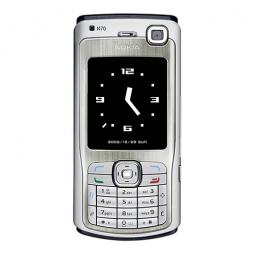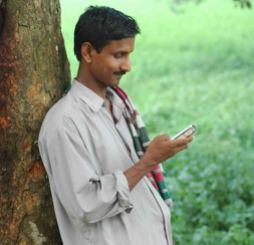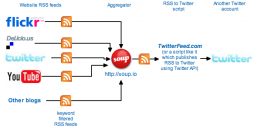disaster relief
Posted by AnneryanHeatwole on Jul 25, 2010
The Mobile Minute is here to bring you the day's mobile-for-development new. Today's Minute covers disaster assistance applications on smartphones, a BBC guide to using pocket-sized video cameras for reporting, the UN ICT Hub's first Briefing Report on ICT4D in the Asia-Pacific region, the development of two new systems that allow mobile phones to work in areas with no reception, an intriguing idea for an iPhone app to combat homelessness, and an event on mobile payments in the Tech@State series in Washington DC.
Posted by LeighJaschke on Jul 07, 2009
The Role of Mobiles in Disasters and Emergencies data sheet 2801 Views
Author:
Coyle, Diana; Childs, Mary Beth
Abstract:
A spate of natural disasters and other emergencies during 2003-2005 has prompted new interest
in how technology can help enhance our security. This report assesses the impact that the widespread
availability of mobile phones has had on the recovery from specific disasters and atrocities, such as the
Indian Ocean tsunami, Hurricane Katrina, the summer floods in central Europe, and terrorist attacks
in Istanbul and London.
Posted by AJuOnLiNE on Feb 23, 2009
I am currently working on developing a client application for Sahana, which can also act as a standalone data collecting tool for field reporters and people working in the process of disaster relief & management.
What is Sahana?
"...Free and Open Source Disaster Management system. It is a web based collaboration tool that addresses the common coordination problems during a disaster from finding missing people, managing aid, managing volunteers, tracking camps effectively between Government groups, the civil society (NGOs) and the victims themselves." - Source - http://www.sahana.lk
What is Openmoko™?
1. Openmoko is a Linux distribution designed for open mobile computing platforms, such as, but not limited to, cellphones.
2. Openmoko is the company behind the Openmoko Linux distribution. Openmoko also manufactures mobile computing platforms, such as the Neo FreeRunner.”
Posted by KatrinVerclas on Dec 31, 2008
Some people are claiming that the conflict in Gaza is a "social war." But so far, social media is used mainly for propaganda and there is a marked absence of voices from people affected by the conflict, and of useful applications of mobile and other social media. As the Israeli bombing of Gaza is continuing and is now in its third day, mobile communication is beginning to make the news but is not playing the dominant role in citizen reporting and aid communications as it has in other conflicts.
A few examples that have not been reported anywhere else: Souktel, an organization in Ramallah that is known for its SMS-job matching service connecting Palestine youth with work, is running a Palestinian "SMS Blood Bank" program for the Red Crescent.
Posted by Esther Nasikye on Sep 29, 2008
A new report published by U.S. trade group, 3G America's, notes that the use of SMS as an emergency alert service poses serious limitations.
The report, Characterizing the Limitations of Third-Party EAS Over Cellular Text Messaging Services (PDF), notes that while use of text messaging or SMS has become ubiquitous and commonplace for recreational and business purposes, the research indicates that there are serious limitations of third party Emergency Alert Systems (EAS).
Posted by KatrinVerclas on Sep 10, 2008
One India reports on how mobile phones are used after the devastating floods in Bihar, India. While relief and aid have been very slow to get to Bihar, mobiles are proving to be a life saver. According to One India,
[Mobiles] are playing the most crucial role in largescale evacuation and rescue of marooned people from far flung areas. The availability of mobile phones to all sections of people across the flooded regions and their 24 hour connectivity during the crisis period, greatly helped the rescue teams to locate the cut off villages and localities besides saving many lives even from remote areas.
Through cell phones the marnooed people were also able to remain connected with the district officials to guide them about their need and the urgency of rescuing them.
In absence of any other mode of communication, particularly the land line telephones, as most of which went under six to eight feet of water in the worst affected districts of Madhepura, Supoul, Araria and Sitamarhi, it was the connectivity of mobile phone network that had kept the hopes of lakhs of people alive.
Posted by KatrinVerclas on Jan 16, 2008
In a series of posts about Twitter for organizations, guest blogger Nate Ritter gives an overview of the benefits and pitfalls using Twitter. And because he is a geek, he's got an aggregator at the ready... (Modified and posted with permission from Nate's blog.)
My experiences in the San Diego fires in Southern California in late 2007 gave me an interesting outlook on how Twitter, as a tool, could be applied in different circumstances. For those of you not in the know: Twitter is a "free social networking and micro-blogging service that allows users to send "updates" (or "tweets"; text-based posts, up to 140 characters long) to the Twitter website, via short message service, instant messaging, or a third-party application such as Twitterrific" according to the Wikipedia. Just a few months after (and some even during) the 2007 firestorm some organizations are scratching the surface of what’s possible with this service.
Twitter is a tool. It’s a good one in some cases and and for some organizations, and useless for others. Don’t make Twitter the hammer and start looking at everything like a nail. Twitter does some things very well, but it doesn’t fit every organization’s goals. Here are some considerations that will help determine if Twitter could be useful for your organization. If one of these criteria benefits your community without too many hurdles for adoption, then Twitter might be the right tool for you.
Posted by Bonnie Bogle on Jul 04, 2006
The UN World Food Programme recently received a different kind of text message – a direct plea for help from a refugee in northern Kenya. The message said, “My name is Mohammed Sokor, writing to you from Dagahaley refugee camp in Dadaab. Dear sir, there is an alarming issue here. People are given too few kilogrammes of food. You must help.”
In an article from the UN Refugee Agency about the SMS, reporter Greg Barrow asks what the impact would be if in addition to giving refugees food, the World Food Programme also gave them a few mobile phones and the numbers of all star donors like Bono and Bill Gates. Mohammed’s text message has been making the rounds in the international press so I don’t doubt that similar messages could draw further attention to problems in refugee camps. But I think a greater impact could be made if an organization, like the One Campaign for example, sought out SMS messages like Mohammed’s from people in refugee camps in need of urgent help and sent them to their network. I bet many people who receive such a personal message will want to help, and if they can help by making a small donation from their mobile phone or sending the sms message on to their political representatives, it could spur action to help alleviate problems such as Mohammed’s.
You can read the entire UNHCR article here.


